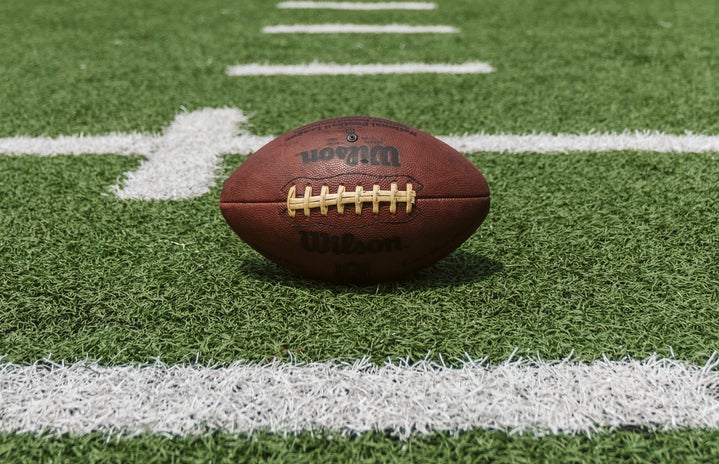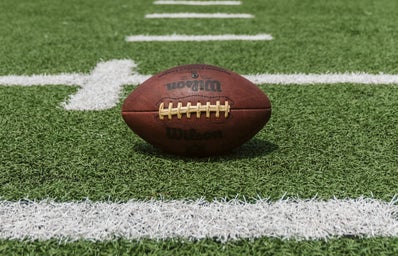By: Summer Krueger
I remember the day my dad told me he was taking me to my first Broncos game. I was horrified. I spent the next week dreading Sunday. I didn’t understand the rules, didn’t like the loud crowds and honestly, I thought football was only for boys. I figured I would be content with watching the cheerleaders and the halftime show, but when I got to the game, the excitement from the crowd began to inspire me.
I decided to at least try and understand what everyone was yelling about. My dad gave me a quick run down of the rules and ever since theb, I have been a diehard football fan (Go Broncos!). The rules can definitely be a bit complicated at first, but once you get a basic understanding and watch a few exciting games, I can almost guarantee you will be looking forward to more than just the halftime show.
So first things first, how are football games scored? There are two different ways to score points: a touchdown and a field goal. A touchdown happens when the offensive team gets the ball to the end zone; this is worth 6 points. After every touchdown, the team gets to try for an extra point. The kicker is brought onto the field and if the ball is kicked through the goalposts, one point is added. So more often than not, if a team gets a touchdown, they will receive 7 points.
However, teams can also use the field goal as a second resort for scoring. If the offensive team can’t make the touchdown (can’t get the ball to the end zone because the defensive team stopped them), they will go for a field goal. Usually at the 4th down (we’ll get to that later), the kicker is brought onto the field and if the ball goes through the goalpost, the offensive team receives 3 points. There are exceptions, but for the most part, touchdowns and field goals are how offensive teams score points.
Now for the fun part: getting to the end zone. The first thing you need to know is the “down” system. Each team gets four tries to make it ten yards and each try is called a down. If they succeed, they get another set of four tries (or what’s called a first down). If they fail to make it 10 yards and they are too far from the end zone to kick a field goal, they will kick it off to the opposing team and it is now their turn to be on offense. If they are close enough to the endzone, most of the time the team will attempt a field goal.
A football field is 100 yards, and the offensive team will usually start around the 20 yard line, so they either have to make it 80 yards down the field to score a touchdown or make it to around 35 yards away from the end zone to kick a field goal. This is all happening while the defensive team is trying their hardest to keep the offense from moving down the field. The defensive team tackles, blocks and uses defensive strategy to stop the offensive team from moving down the field.
There are two ways offensive teams move the ball down the field. The quarterback either throws the ball to a receiver or passes the ball off to a running back that will run it down the field. A pass usually will get the offensive team more yards, but this is more risky. The receiver might drop the ball, gaining the offensive team zero yards, or be intercepted (caught by a defensive player, meaning the defensive team is now in possession of the ball). A run up the field by a running back usually gets the offensive team less yards, but is generally a safer bet. There is less chance of a turnover, and more times than not, at least a few yards are gained.
So let’s say it’s first down and the Rams (the LA team playing in the superbowl) are starting on offense at the 25 yard line. Matthew Stafford (the quarterback of the Rams) throws the ball to a receiver and the receiver catches the ball on the 36 yard line. That would be a gain of 11 yards and therefore the Rams would get another first down.
Let’s say the Rams have successfully made it to the 30 yard line, it’s third down and two (this means that it is the Rams third attempt and they need to make it 2 more yards to get a first down). Matthew Stafford throws the ball, but the receiver does not catch it.
Now it is fourth down, the team has to decide whether to try to make it two yards (and get another first down) or kick a field goal. The advantage of kicking a field goal is that the team would most likely get 3 points, the disadvantage is that they will not be able to keep trying for a touchdown.
If they decide to go for the fourth down and successfully make it two more yards, they will get another first down and be able to keep playing and try for a touchdown. If they are unable to make it two more yards, it will be an automatic turnover (the other team gets possession of the ball) and the Bangles (the other team playing in the superbowl lead by quarterback Joe Burrow) will get to start on the 30 yard line.
One last helpful tip before Super Bowl Sunday. In a box usually at the bottom right corner of the screen, it will give two numbers. For example, it might say “2nd & 7,” meaning it is second down and the offensive team had seven yards to go before getting another first down. This little box is your best friend, keep an eye on it and you will always know what is happening in the game.
So there you have it, those are the basics of football. With this new information, you should be able to keep up with the crowd and impress your friends with your knowledge of the game. And who knows, you might even find yourself enjoying it.


